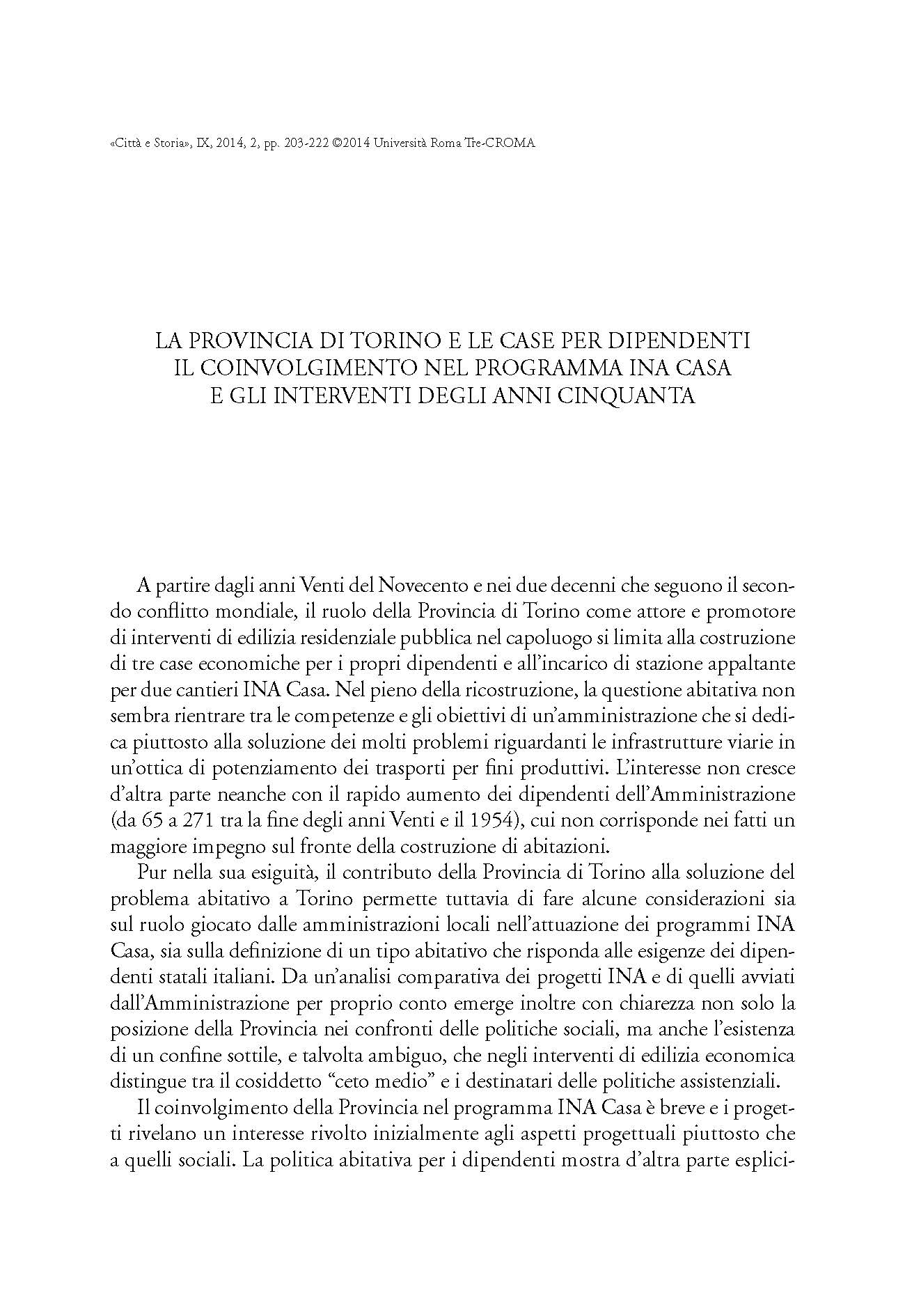La provincia di Torino e le case per dipendenti: il coinvolgimento nel programma INA Casa e gli interventi degli anni Cinquanta
6,00 €
Between the 1920s and the 1960s the Province of Turin built only three houses for its employees in the city and when, after World War II, the housing issue became the focus of local authorities, its commitment was rather addressed to roads reconstruction. The immediate involvement of the Administration in the INA Casa Program (1949-50) was followed by a complete lack of interest in the assignment of apartments, which were considered unsuitable for the “middle class” aspirations of the provincial employees. The few projects built by the Province for its employees thus revealed the choice for a non-charitable approach to the housing problems, also testified to by the assignment policies, that placed rewards for service before necessity. The distinction between the housing type chosen by the Province for INA and the one designed for its employees in the 1950s was rather thin, but, regarding the latter, it deserves attention the careful choice of urban areas, able to strongly attenuate the “economical” connotation of the apartments.
Between the 1920s and the 1960s the Province of Turin built only three houses for its employees in the city and when, after World War II, the housing issue became the focus of local authorities, its commitment was rather addressed to roads reconstruction. The immediate involvement of the Administration in the INA Casa Program (1949-50) was followed by a complete lack of interest in the assignment of apartments, which were considered unsuitable for the “middle class” aspirations of the provincial employees. The few projects built by the Province for its employees thus revealed the choice for a non-charitable approach to the housing problems, also testified to by the assignment policies, that placed rewards for service before necessity. The distinction between the housing type chosen by the Province for INA and the one designed for its employees in the 1950s was rather thin, but, regarding the latter, it deserves attention the careful choice of urban areas, able to strongly attenuate the “economical” connotation of the apartments.

